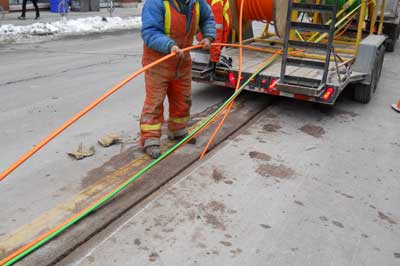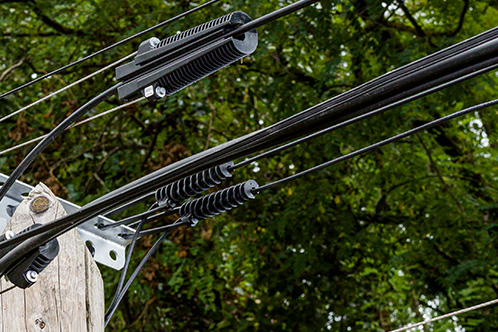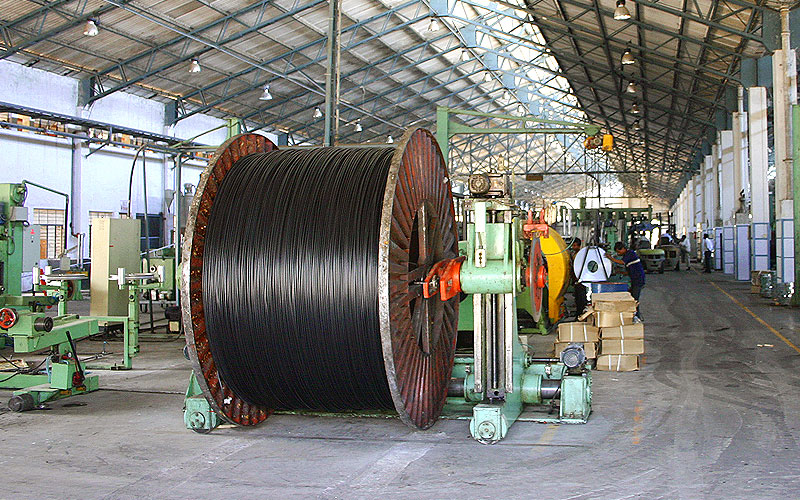Title: Essential Considerations for Fiber Optic Outdoor Installation by Fiber Optic Manufacturers
Introduction:
Fiber optic outdoor installations require meticulous planning and execution to ensure the reliable transmission of data. As fiber optic manufacturers, we believe it is essential to outline the key considerations and precautions for successful outdoor fiber optic installations. This article aims to provide a comprehensive guide to help fiber optic technicians and engineers in their outdoor installation projects.

Site Survey and Planning:
Before initiating any outdoor fiber optic installation, conducting a thorough site survey is critical. Factors such as environmental conditions, terrain, distance, and accessibility should be carefully assessed. The following points should be considered during the planning stage:
a. Environmental Factors:
Identify potential sources of interference, such as electromagnetic fields or excessive heat.
Assess the impact of weather conditions on the fiber optic cables (e.g., rain, thunderstorms, extreme temperatures).
Take into account the presence of wildlife or foliage that may pose potential threats.
b. Terrain and Distance:
Measure the distance between the starting and ending points of the installation.
Analyze the topography (flat, hilly, or rugged) to determine the type of installation method required (aerial, underground, or direct burial).
c. Accessibility:
Ensure that the installation site is easily accessible for both installation and maintenance purposes.
Consider any additional permits or permissions required for access to specific areas.
Cable Selection:

Choosing the appropriate fiber optic cable is crucial for outdoor installations. Consider the following factors:
a. Strength and Durability:
Select cables that are designed for outdoor use, capable of withstanding environmental conditions such as moisture, UV radiation, and temperature variations.
Opt for cables with proper tensile strength to withstand potential stressors, such as tension during aerial installations or pressure during direct burial.
b. Protection and Armor:
Evaluate the need for additional armor or protective layers to safeguard the cables against external factors, such as rodents, vandalism, and other physical damage.
Joint Enclosures and Protective Measures:
Proper joint enclosures and protective measures are essential for secure and long-lasting outdoor fiber optic installations. Consider the following guidelines:
a. Enclosures:
Utilize robust enclosures that provide protection against moisture, dust, and other environmental contaminants.
Ensure that enclosures allow ample space for cable storage, splicing, and accessibility for maintenance and repairs.
b. Sealing and Waterproofing:

Apply suitable sealing materials to prevent moisture ingress into spliced fiber optic cables and joints.
Implement waterproofing techniques around joints and cable entries to maintain long-term reliability.
Cable Routing and Management:
Proper cable routing and management optimize the functionality and lifespan of outdoor fiber optic installations. Consider the following recommendations:
a. Minimum Bend Radius:
Adhere to manufacturer guidelines and maintain appropriate bend radius to prevent signal loss or cable damage.
b. Cable Identification and Documentation:
Implement clear labeling and documentation methods to identify specific cables and their functions for ease of future maintenance and troubleshooting.
Conclusion:
Successful fiber optic outdoor installations require meticulous planning and adherence to industry best practices. By conducting a thorough site survey, selecting suitable cables, utilizing appropriate enclosures, and ensuring proper cable routing, fiber optic technicians can achieve reliable and long-lasting outdoor installations. Always refer to manufacturer guidelines and consult with experienced professionals to address specific project requirements.



